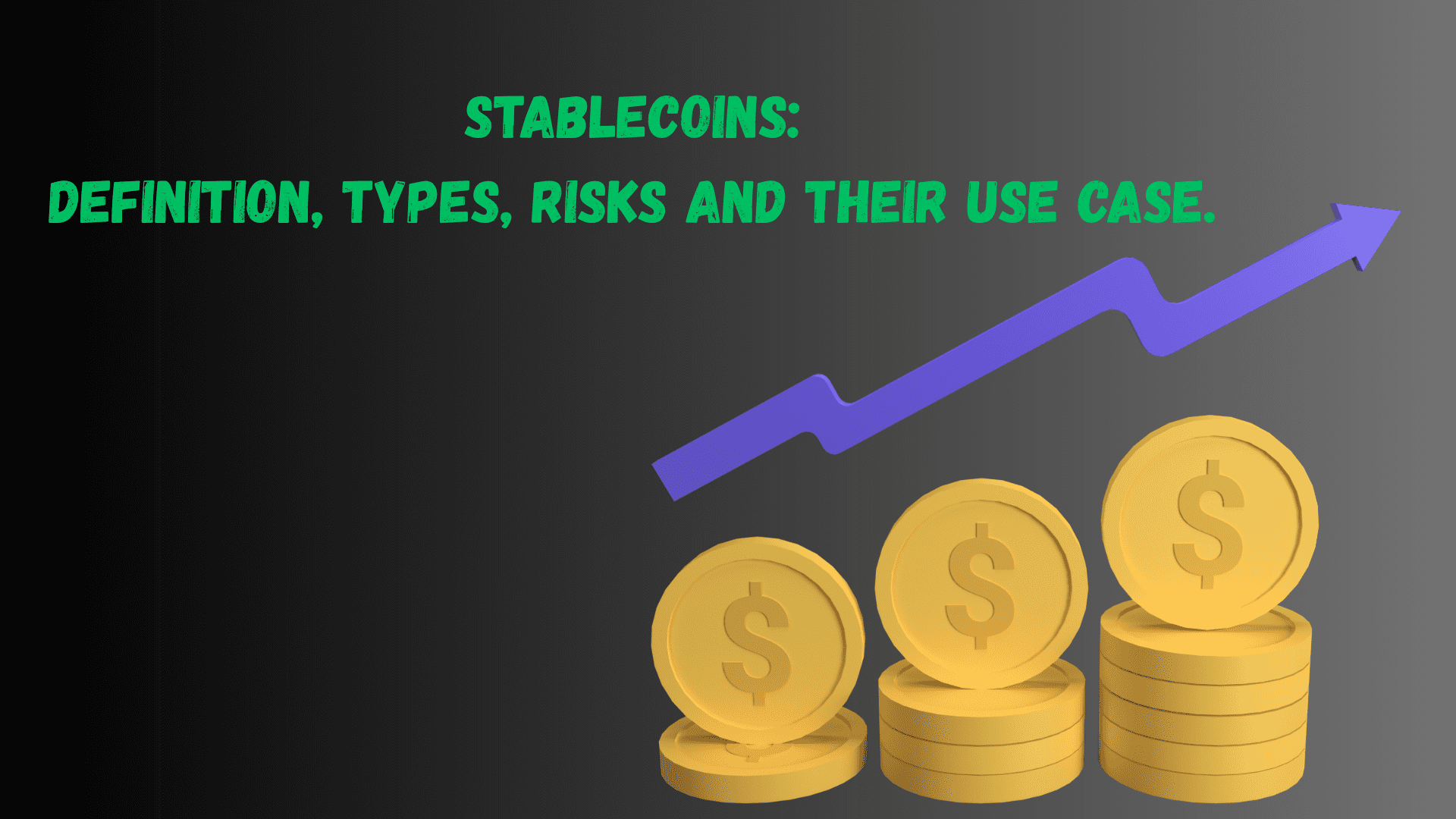As the Kenyan shilling continues to lose value and traditional financial systems struggle with high fees and slow cross-border transfers, more Kenyans are turning to stablecoins for faster, cheaper, more reliable and easier ways to store and move money. From freelancers paid in dollars to families receiving remittances, stablecoins in Kenya are emerging as a practical solution to real financial pain points, offering a digital bridge between local needs and global finance. Yet despite their growing popularity, many still don’t fully understand how stablecoins work or why they could reshape the future of money in Kenya. In this article I will walk you through all you need to know about stablecoins.
What are stablecoins?
Stablecoins are a special category of cryptocurrency whose value is designed to remain stable over time, often by being “pegged” to a more stable asset such as a fiat currency (e.g., USD, EUR, KES), precious metals (like gold), or managed using automated algorithms. In simple words, stablecoins are digital assets that are pegged to another asset to maintain a stable price. They are built by blockchain technology, which helps their transferability be easier,transparent and quicker, just like other cryptocurrencies. Unlike volatile coins like Ethereum and Bitcoin, stablecoins aim to minimize market volatility. Stablecoins are often pegged to the US dollar.
How do stablecoins work
Stablecoins work by maintaining a fixed value through different methods of backing and control. The most common stablecoins, like USDT and USDC, are backed by real-world reserves such as cash or government bonds held in banks. When someone buys a stablecoin, the issuer holds an equivalent value in reserve to keep the price stable. Others, like DAI, use crypto as collateral and smart contracts to avoid an imbalance. Algorithmic stablecoins rely on code to adjust supply and demand.
What is the importance of stablecoins in Kenya?
Stablecoins are increasingly gaining popularity in Kenya because they offer a stable, acessible and low-cost alternative to traditional financial systems, especially for cross-border payments, online earnings and personal savings. With the fluctuation in the Kenyan shilling and forex market, stablecoins help protect value and give users more access and control over their finances.
Stablecoins are more useful to freelancers, remote workers and businesses dealing with international clients, enabling fast, affordable transactions without relying on intermediaries or third-party organizations such as banks or costly money transfer services. Due to their good integration with digital wallets, they make a powerful tool for financial inclusion.
Types of stablecoins
In a world where digital finance is evolving rapidly, stablecoins have emerged as a bridge between the stability of traditional money and the innovation of blockchain technology. To keep their value steady and trustworthy, stablecoins rely on different methods of backing, each with its strengths, risks, and use cases. These methods have given rise to four main types of stablecoins, categorized by the kind of asset or system that maintains their price stability. Here is a breakdown of the four main types of Stablecoins in Kenya.
1. Fiat-collateralized stablecoins
These are stablecoins pegged to a specific asset. They maintain a reserve of a fiat currency or currencies, such as the US dollar. Such reserves are maintained by an independent custodian and are regularly audited. Though this is the simplest type of stablecoin, it is also the most centralized too. They are stable, have predictable value, have high liquidity and are widely accepted globally. These stablecoins in Kenya are centralized and require regular auditing, which makes this one of their biggest limitations.
Use case
Fiat-collateralized stablecoins have several uses, which include the following. They are used in:
- Trading pairs on different exchanges.
- Storing value in USD without a US bank account.
- Sending digital dollars across borders.
2. Crypto-Backed Stablecoins
These stablecoins in Kenya are pegged to fiat but backed by cryptocurrencies instead of fiat reserves. A good example is the DAI, which is pegged to USD but backed by ETH, USDC, and other assets. These stablecoins are often overcollateralized to absorb the market volatility. They are fully decentralized, transparent and do not rely on central custodians. The need for governance, confusing complexity to new users and being affected by crypto volatility become their major challenges.
3. Non-Collateralized (Algorithmic) Stablecoins
These are stablecoins that do not involve any reserved assets. They use mathematical formulas and smart contracts to control demand and supply without backing from any asset. Instead, their stability is derived from working mechanisms such as central banks. A good example is TerraUSD (UST), which failed in May 2022 due to de-pegging and collapse. They adjust supply based on market price and incentivize arbitrage to keep the peg. They are fully decentralized and do not need any collateral. They are very risky and fragile under stress.
4. Commodity-Backed Stablecoins
These are stablecoins pegged to the price of a commodity like gold and are backed by physical holdings. An example of this is the PAXG (Paxos Gold), where each token is backed by one fine troy ounce of gold. These stablecoins are used in hedging against inflation and exposure to commodities without holding them physically. They offer stability through tangible value and bridge crypto with traditional finance; they also have custody risk and less liquidity.
Risks of stablecoins in kenya
i) Centralization Risk
Most stablecoins are controlled by private companies that can freeze or block funds. This limits user control and adds trust risk. This goes against the decentralized spirit of crypto and adds a layer of trust-based risk.
ii) Lack of Transparency
Some issuers (like Tether) have been accused of unclear or incomplete reserve reporting. You may not know if your stablecoin is fully or partially backed. If the company doesn’t actually hold the assets it claims to, users may be left with worthless tokens during a financial crunch.
iii) De-Pegging Risk
Stablecoins can lose their $1 value due to market panic, poor design, or low liquidity. UST’s crash is a major cautionary tale.
iv) Algorithmic Collapse
Algorithmic coins rely on supply-demand math, not collateral. These can fail completely during sell-offs or manipulation. When market conditions change rapidly, these models fail, causing total deviation for several hours or days.
v) Regulatory Risk
Governments may ban, regulate, or restrict stablecoins in Kenya suddenly. This can impact availability or usability in countries like Kenya. A sudden change in laws and regulations may make it difficult to change stablecoins into cash.
vi) Smart Contract Bugs
Crypto-backed coins use code that can have bugs or be hacked. This can cause loss of funds or liquidation failures. If there’s a coding error, vulnerability, or design flaw, it can lead to mass liquidations, security breaches, or system failures. Bugs in DeFi protocols have already cost users millions in finances.
vii) Liquidity Risk
Some stablecoins may be hard to sell or cash out in a crisis. Low liquidity and high risk when you need quick access.
viii) Custodial Risk
If your stablecoins are on an exchange or third-party wallet, you could lose them if the service shuts down (e.g., the FTX collapse).
ix) Geopolitical Exposure
USD-backed stablecoins expose you to U.S. monetary policy and sanctions. Changes in global finance could affect your coins.
ix) Technology Failure
Wallets, apps, or blockchains may crash or be exploited. This can lead to stuck transactions or full loss of funds.
The future of stablecoins in Kenya
The future of stablecoins in Kenya looks promising as more people seek fast, affordable, and reliable alternatives to traditional financial systems. With the rise of mobile money, freelance work, crypto adoption, and cross-border trade, stablecoins offer a practical solution for storing value in USD, sending remittances, and transacting globally without relying on volatile local currencies like the Kenyan shilling. However, their growth will depend on government regulation, public education, and the development of secure, user-friendly platforms that integrate well with Kenya’s fintech ecosystem.
FAQs
What are the top 5 stablecoins?
- USDT (Tether)—Most widely used and highly liquid.
- USDC (USD Coin)—regulated and regularly audited.
- DAI—decentralized and crypto-backed by MakerDAO.
- PAXG (Paxos Gold)—backed by physical gold.
- EUROC (Euro Coin)—a euro-pegged stablecoin by Circle.
Can you invest in stablecoins?
Yes, you can invest in stablecoins as an individual, but they are mainly used for preserving value, earning interest, and facilitating crypto trading.
What is the strongest stablecoin?
USDC is sometimes considered the strongest stablecoin because it is widely adopted. Tether (USDT) is currently the strongest and most widely used stablecoin, with the highest market capitalization and broad acceptance across crypto platforms.
Conclusion
Stablecoins in Kenya are proving to be more than just a crypto trend in Kenya—they are becoming essential tools for everyday financial needs. From shielding wealth against currency volatility to enabling faster, low-cost international payments, stablecoins bridge the gap between traditional finance and digital innovation. As adoption grows, understanding how they work, their types, benefits, and associated risks is crucial. For Kenyans navigating a changing economic landscape, stablecoins offer a new kind of financial freedom, accessible, borderless, and future-ready.

